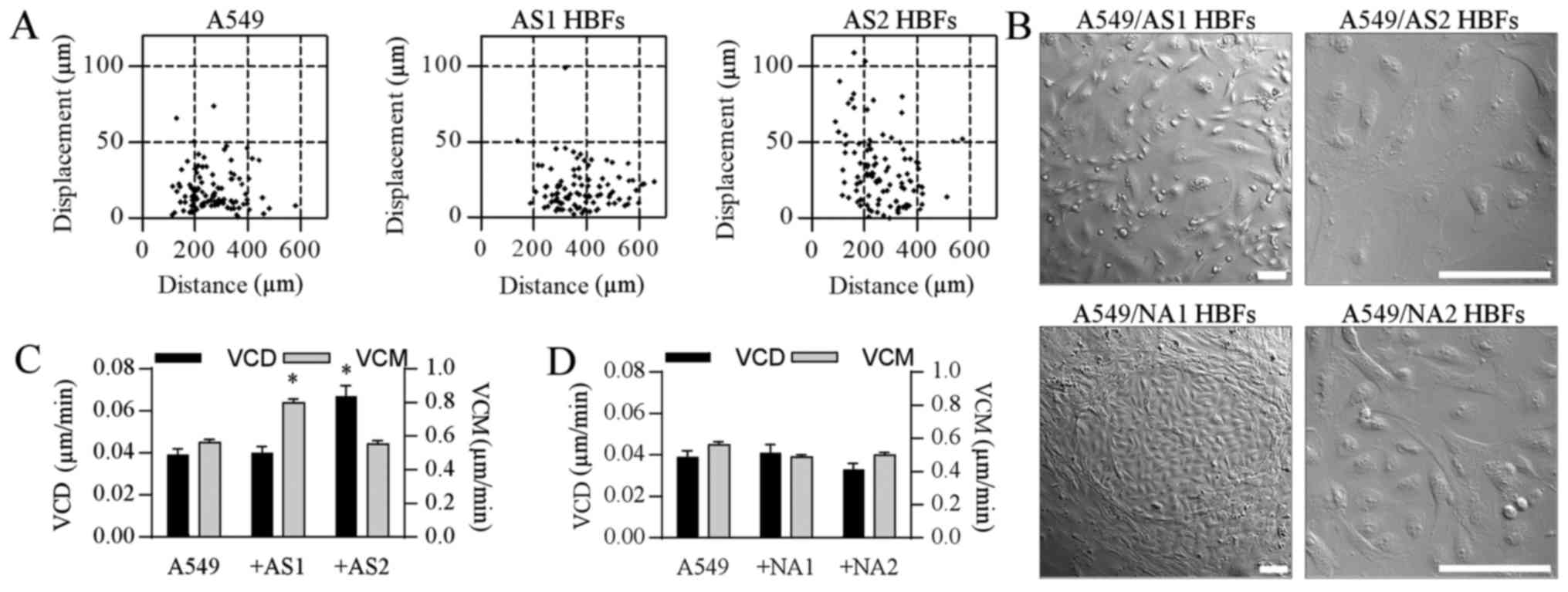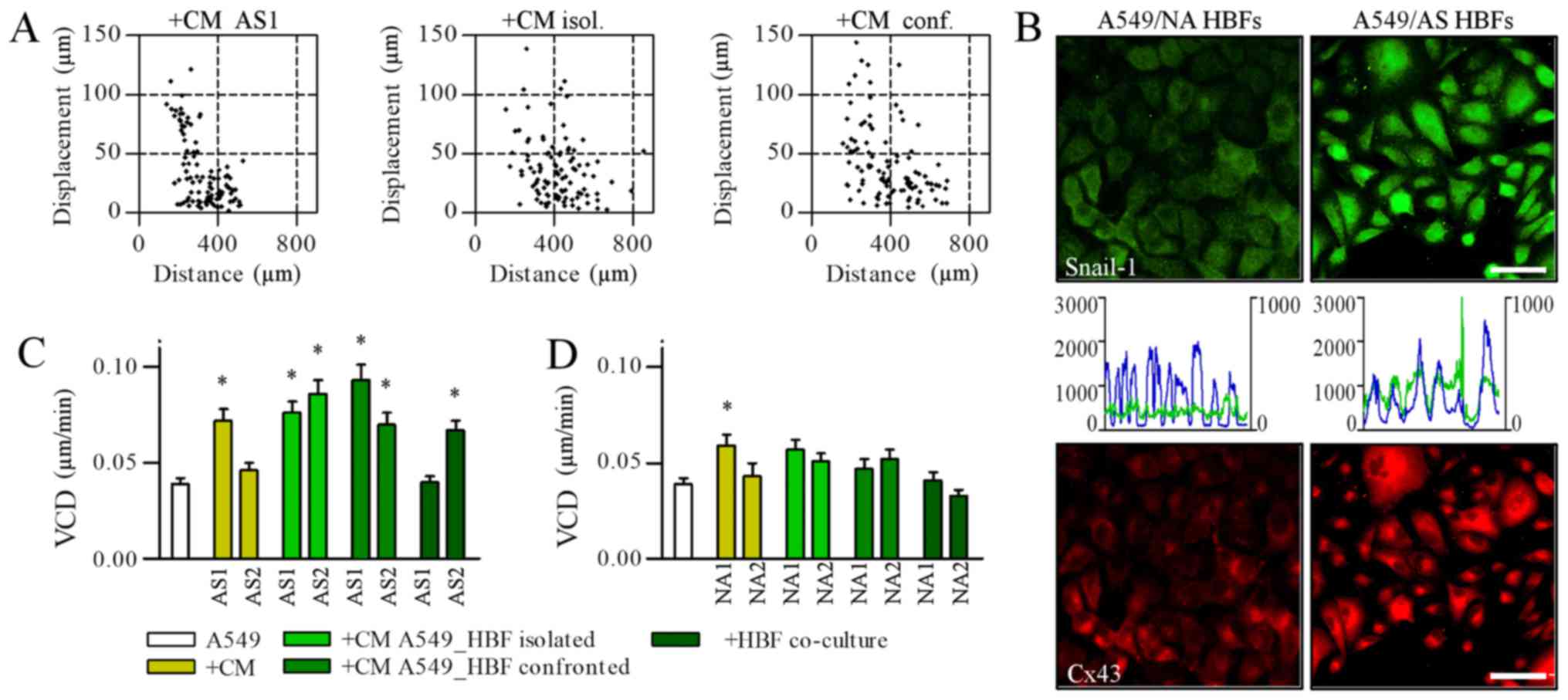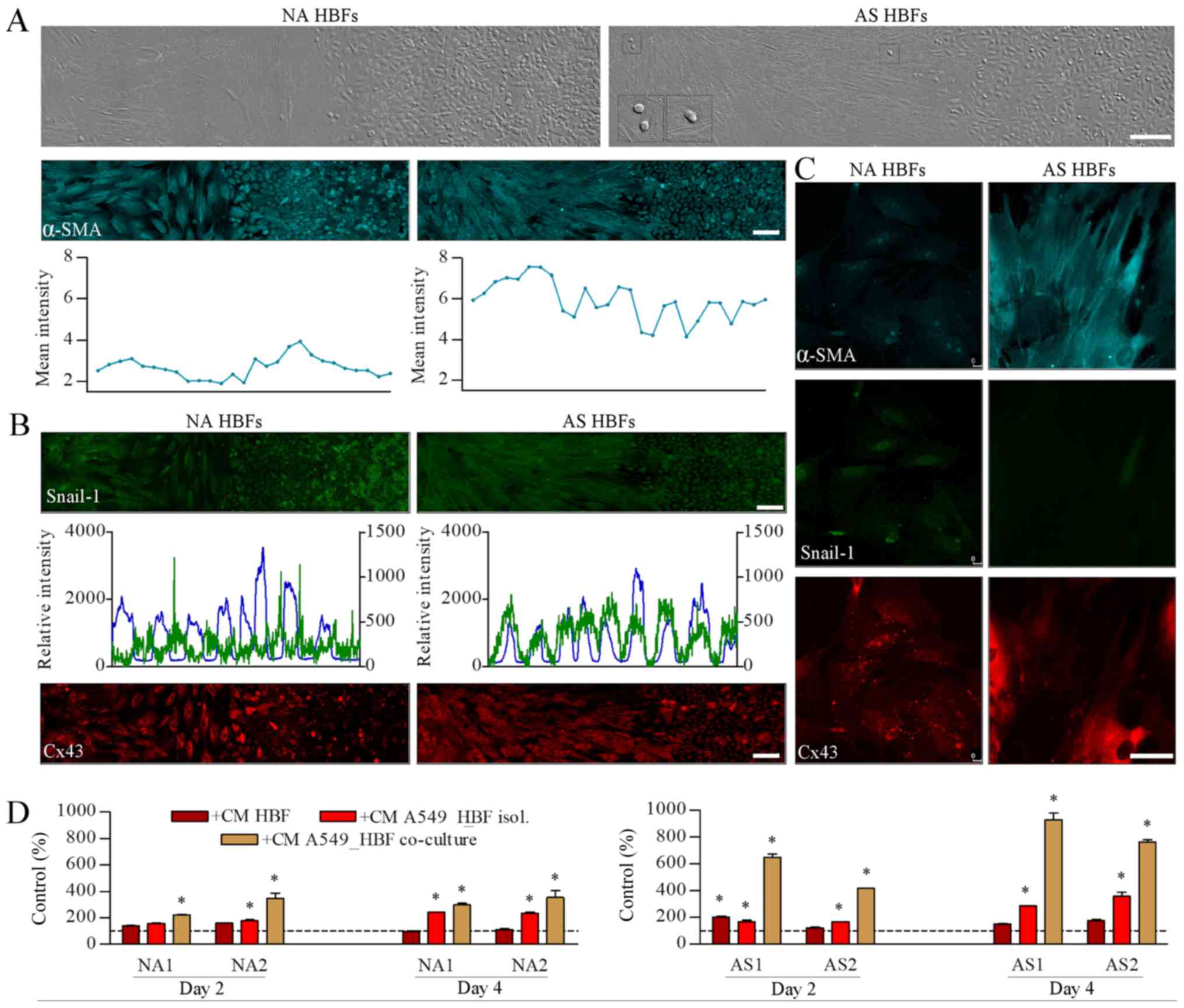|
1
|
Anandan C, Nurmatov U, van Schayck OC and
Sheikh A: Is the prevalence of asthma declining? Systematic review
ofepidemiological studies. Allergy. 65:152–167. 2010. View Article : Google Scholar : PubMed/NCBI
|
|
2
|
Al Muhsen S, Johnson JR and Hamid Q:
Remodeling in asthma. J Allergy Clin Immunol. 128:451–462. 2011.
View Article : Google Scholar : PubMed/NCBI
|
|
3
|
Halwani R, Al Muhsen S, Al Jahdali H and
Hamid Q: Role of transforming growth factor-β in airway remodeling
in asthma. Am J Respir Cell Mol Biol. 44:127–133. 2011. View Article : Google Scholar : PubMed/NCBI
|
|
4
|
Ingram JL, Huggins MJ, Church TD, Li Y,
Francisco DC, Degan S, Firszt R, Beaver DM, Lugogo NL, Wang Y, et
al: Airway fibroblasts in asthma manifest an invasive phenotype. Am
J Respir Crit Care Med. 183:1625–1632. 2011. View Article : Google Scholar : PubMed/NCBI
|
|
5
|
Darby IA, Laverdet B, Bonté F and
Desmoulière A: Fibroblasts and myofibroblasts in wound healing.
Clin Cosmet Investig Dermatol. 7:301–311. 2014.PubMed/NCBI
|
|
6
|
Michalik M, Pierzchalska M, Wlodarczyk A,
Wójcik KA, Czyż J, Sanak M and Madeja Z: Transition of asthmatic
bronchial fibroblasts to myofibroblasts is inhibited by cell-cell
contacts. Respir Med. 105:1467–1475. 2011. View Article : Google Scholar : PubMed/NCBI
|
|
7
|
Agarwal SK: Integrins and cadherins as
therapeutic targets in fibrosis. Front Pharmacol. 5:1312014.
View Article : Google Scholar : PubMed/NCBI
|
|
8
|
Desmoulière A, Chaponnier C and Gabbiani
G: Tissue repair, contraction, and the myofibroblast. Wound Repair
Regen. 13:7–12. 2005. View Article : Google Scholar : PubMed/NCBI
|
|
9
|
Rosenberger A, Bickeböller H, McCormack V,
Brenner DR, Duell EJ, Tjønneland A, Friis S, Muscat JE, Yang P,
Wichmann HE, et al: Asthma and lung cancer risk: A systematic
investigation by the International Lung Cancer Consortium.
Carcinogenesis. 33:587–597. 2012. View Article : Google Scholar : PubMed/NCBI
|
|
10
|
Attieh Y and Vignjevic DM: The hallmarks
of CAFs in cancer invasion. Eur J Cell Biol. 95:493–502. 2016.
View Article : Google Scholar : PubMed/NCBI
|
|
11
|
Kuzet SE and Gaggioli C: Fibroblast
activation in cancer: When seed fertilizes soil. Cell Tissue Res.
365:607–619. 2016. View Article : Google Scholar : PubMed/NCBI
|
|
12
|
Fujita A, Kameda Y and Goya T:
Clinicopathology of stromal invasion in lung adenocarcinoma. Pathol
Int. 59:1–6. 2009. View Article : Google Scholar : PubMed/NCBI
|
|
13
|
Michalik M, Soczek E, Kosinska M, Kosińska
M, Rak M, Wójcik KA, Lasota S, Pierzchalska M, Czyż J and Madeja Z:
Lovastatin-induced decrease of intracellular cholesterol level
attenuates fibroblast-to-myofibroblast transition in bronchial
fibroblasts derived from asthmatic patients. Eur J Pharmacol.
704:23–32. 2013. View Article : Google Scholar : PubMed/NCBI
|
|
14
|
Wójcik KA, Skoda M, Koczurkiewicz P, Sanak
M, Czyż J and Michalik M: Apigenin inhibits TGF-β1 induced
fibroblast-to-myofibroblast transition in human lung fibroblast
populations. Pharmacol Rep. 65:164–172. 2013. View Article : Google Scholar : PubMed/NCBI
|
|
15
|
Paw M, Borek I, Wnuk D, Ryszawy D,
Piwowarczyk K, Kmiotek K, Wójcik-Pszczoła KA, Pierzchalska M,
Madeja Z, Sanak M, et al: Connexin43 controls the myofibroblastic
differentiation of bronchial fibroblasts from patients with asthma.
Am J Respir Cell Mol Biol. 57:100–110. 2017. View Article : Google Scholar : PubMed/NCBI
|
|
16
|
Piwowarczyk K, Paw M, Ryszawy D,
Rutkowska-Zapała M, Madeja Z, Siedlar M and Czyż J:
Connexin43high prostate cancer cells induce endothelial
connexin43 up-regulation through the activation of intercellular
ERK1/2-dependent signaling axis. Eur J Cell Biol. 96:337–346. 2017.
View Article : Google Scholar : PubMed/NCBI
|
|
17
|
Ryszawy D, Sarna M, Rak M, Szpak K,
Kędracka-Krok S, Michalik M, Siedlar M, Zuba-Surma E, Burda K,
Korohoda W, et al: Functional links between Snail-1 and Cx43
account for the recruitment of Cx43-positive cells into the
invasive front of prostate cancer. Carcinogenesis. 35:1920–1930.
2014. View Article : Google Scholar : PubMed/NCBI
|
|
18
|
Erdogan B and Webb DJ: Cancer-associated
fibroblasts modulate growth factor signaling and extracellular
matrix remodeling to regulate tumor metastasis. Biochem Soc Trans.
45:229–236. 2017. View Article : Google Scholar : PubMed/NCBI
|
|
19
|
Condeelis J and Pollard JW: Macrophages:
Obligate partners for tumor cell migration, invasion, and
metastasis. Cell. 124:263–266. 2006. View Article : Google Scholar : PubMed/NCBI
|
|
20
|
Baran B, Bechyne I, Siedlar M, Szpak K,
Mytar B, Sroka J, Laczna E, Madeja Z, Zembala M and Czyz J: Blood
monocytes stimulate migration of human pancreatic carcinoma cells
in vitro: The role of tumour necrosis factor-alpha. Eur J Cell
Biol. 88:743–752. 2009. View Article : Google Scholar : PubMed/NCBI
|
|
21
|
Fidler IJ, Kim SJ and Langley RR: The role
of the organ microenvironment in the biology and therapy of cancer
metastasis. J Cell Biochem. 101:927–936. 2007. View Article : Google Scholar : PubMed/NCBI
|
|
22
|
Bremnes RM, Al Shibli K, Donnem T, Sirera
R, Al-Saad S, Andersen S, Stenvold H, Camps C and Busund LT: The
role of tumor-infiltrating immune cells and chronic inflammation at
the tumor site on cancer development, progression, and prognosis:
Emphasis on non-small cell lung cancer. J Thorac Oncol. 6:824–833.
2011. View Article : Google Scholar : PubMed/NCBI
|
|
23
|
Bremnes RM, Dønnem T, Al Saad S, Al-Shibli
K, Andersen S, Sirera R, Camps C, Marinez I and Busund LT: The role
of tumor stroma in cancer progression and prognosis: Emphasis on
carcinoma-associated fibroblasts and non-small cell lung cancer. J
Thorac Oncol. 6:209–217. 2011. View Article : Google Scholar : PubMed/NCBI
|
|
24
|
Sarna M, Wojcik KA, Hermanowicz P, Wnuk D,
Burda K, Sanak M, Czyż J and Michalik M: Undifferentiated bronchial
fibroblasts derived from asthmatic patients display higher elastic
modulus than their non-asthmatic counterparts. PLoS One.
10:e01168402015. View Article : Google Scholar : PubMed/NCBI
|
|
25
|
Czyż J, Szpak K and Madeja Z: The role of
connexins in prostate cancer promotion and progression. Nat Rev
Urol. 9:274–282. 2012. View Article : Google Scholar : PubMed/NCBI
|
|
26
|
Bechyne I, Szpak K, Madeja Z and Czyż J:
Functional heterogeneity of non-small lung adenocarcinoma cell
sub-populations. Cell Biol Int. 36:99–103. 2011. View Article : Google Scholar
|
|
27
|
Qu YL, Liu J, Zhang LX, Wu CM, Chu AJ, Wen
BL, Ma C, Yan XY, Zhang X, Wang DM, et al: Asthma and the risk of
lung cancer: A meta-analysis. Oncotarget. 8:11614–11620. 2017.
View Article : Google Scholar : PubMed/NCBI
|
|
28
|
Langley RR and Fidler IJ: Tumor cell-organ
microenvironment interactions in the pathogenesis of cancer
metastasis. Endocr Rev. 28:297–321. 2007. View Article : Google Scholar : PubMed/NCBI
|
|
29
|
Erdogan B, Ao M, White LM, Means AL,
Brewer BM, Yang L, Washington MK, Shi C, Franco OE, Weaver AM, et
al: Cancer-associated fibroblasts promote directional cancer cell
migration by aligning fibronectin. J Cell Biol. 216:3799–3816.
2017. View Article : Google Scholar : PubMed/NCBI
|

















